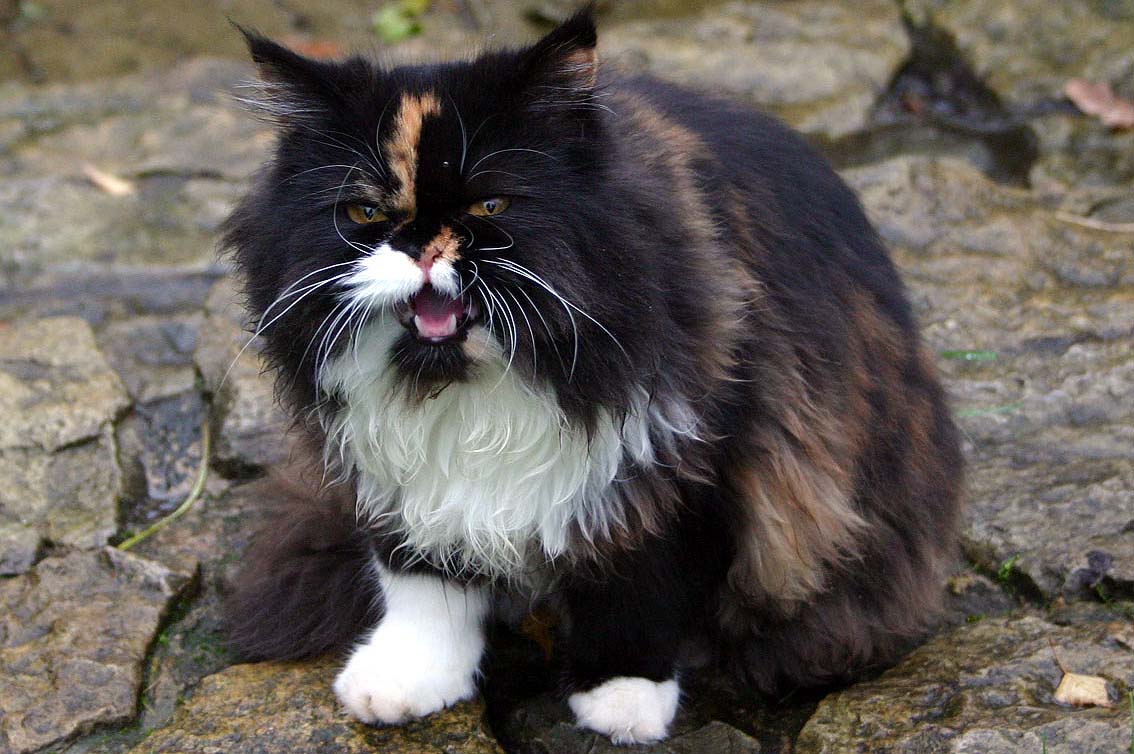Persian cats are known for their distinctive appearance, with their fluffy coats and flat faces. While these features contribute to their charm, they can also lead to some unique health concerns, including excessive drooling. In this comprehensive guide, we’ll explore the common causes of Persian cat drooling, the associated symptoms, and practical steps you can take to prevent or reduce this issue.
What Causes Persian Cats to Drool?

1. Relaxation and Contentment
Like other cats, Persian cats may drool when they are relaxed or content, often accompanied by purring and kneading. This type of drooling is generally not a cause for concern.
2. Stress and Anxiety
Persian cats, especially due to their flat faces, can be more prone to stress and anxiety, which can lead to temporary drooling.
3. Heatstroke
Due to their brachycephalic (flat-faced) nature, Persian cats are more susceptible to heatstroke, which can cause excessive drooling.
4. Dental Disease
Dental issues such as gum disease, tartar buildup, and tooth decay are common causes of drooling in cats, including Persians. Symptoms include bad breath, red and swollen gums, and difficulty swallowing.
5. Upper Respiratory Infections
These infections can cause drooling, especially in multi-cat households or shelters. Symptoms include nasal discharge, sneezing, and lethargy.
6. Organ Disease
Liver and kidney diseases can also lead to drooling in cats. Symptoms may include weight loss, decreased appetite, and lethargy.
7. Toxic Substances
Ingestion of toxic plants or substances can cause drooling. Common toxic plants include tulips, azaleas, and chrysanthemums.
How to Prevent or Reduce Persian Cat Drooling

1. Dental Care
- Regular Brushing: Use a cat-friendly toothbrush and toothpaste to brush your cat’s teeth daily. This helps prevent tartar buildup and reduces the risk of dental disease.
- Professional Cleaning: Schedule regular dental cleanings with your veterinarian to maintain good oral health.
2. Preventing Heatstroke
- Provide Shade and Water: Ensure your cat has access to fresh water and shady areas to cool off, especially during hot weather.
- Limit Sun Exposure: Keep your cat indoors during the hottest parts of the day and avoid leaving them in parked cars.
3. Reducing Stress
- Gradual Exposure: If your cat experiences stress during car rides or vet visits, gradually expose them to these situations to reduce anxiety.
- Pheromones and Medications: Consult your veterinarian about using pheromones (like Feliway) or medications (like Gabapentin) to calm your cat during stressful situations.
4. Monitoring Health
- Regular Checkups: Schedule annual checkups with your veterinarian, or bi-annual for older cats, to monitor for underlying health issues.
- Observing Behavior: Keep an eye on changes in your cat’s behavior, such as decreased appetite, lethargy, or changes in drooling patterns, and consult your veterinarian if you notice any unusual signs.
Recommended Products and Ingredients
- Cat-Friendly Toothpaste: Use toothpaste specifically designed for cats, as human toothpaste can be toxic to them.
- Dental Chews and Toys: Provide dental chews and toys to help reduce tartar buildup and promote oral health.
- Pheromone Products: Use products like Feliway to help reduce stress and anxiety in your cat.
Costs and Measurements
- Dental Care: The cost of dental care can vary widely depending on the services needed. A professional dental cleaning can range from $50 to $500 or more, depending on the complexity of the procedure.
- Veterinary Checkups: Regular checkups can cost between $50 to $200 per visit, depending on the services provided.
- Pheromone Products: Feliway products can range from $10 to $50, depending on the type and duration of use.
Behavioral Observations
- Increased Drooling: If your cat suddenly starts drooling more than usual, it could indicate an underlying health issue.
- Changes in Appetite or Grooming: Decreased appetite or grooming habits can be signs of dental disease or other health issues.
- Bad Breath or Swollen Gums: These are clear indicators of dental problems.
